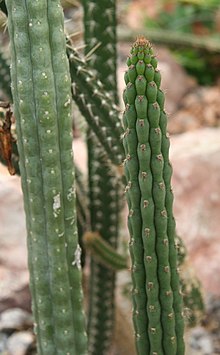
Samaipaticereus is a monotypic genus of cactus containing the sole species Samaipaticereus corroanus. It is known only from East Andean Bolivia and Peru.

Cleistocactus winteri is a succulent of the family Cactaceae. Its common name is the golden rat tail. Cleistocactus winteri subsp. colademono, as its synonym Cleistocactus colademononis, has gained the Royal Horticultural Society's Award of Garden Merit.

Quiabentia verticillata is a species of cactus found from Bolivia to Argentina
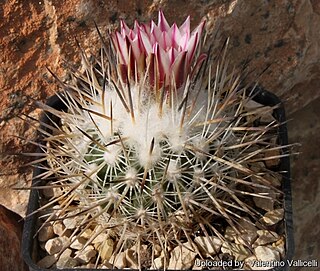
Rapicactus mandragora, synonym Turbinicarpus mandragora, is a species of plant in the family Cactaceae.
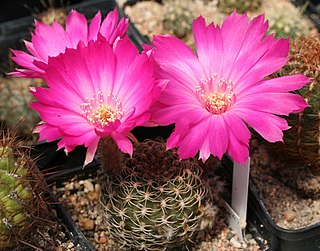
Lobivia backebergii is a species of flowering plant in the cactus family Cactaceae, native to eastern Bolivia and southern Peru.

Cleistocactus samaipatanus is a species of flowering plant in the family Cactaceae, native to Bolivia.

Cleistocactus tominensis is a species of columnar cactus in the genus Cleistocactus, endemic to Bolivia, where it is found in forests, on cliffs, and in inter-Andean valleys at altitudes of 900 to 2,200 meters.

Cereus aethiops is a species of cactus found from Uruguay to Argentina.

Arthrocereus spinosissimus is a species of cactus in the subfamily Cactoideae from Brazil.

Oreocereus trollii, commonly known as the Old Man of the Andes cactus, is a species of cacti native to Argentina and Bolivia. Though listed as Least Concern by the IUCN, the plant is collected extensively, and in some areas is threatened.

Lobivia ancistrophora is a species of cactus. It has a globular shape, few spines, with large, white flowers attached to long, green tubes. It occurs in Bolivia, at altitudes of 600–1800 metres. Under its synonym Echinopsis ancistrophora it has gained the Royal Horticultural Society's Award of Garden Merit.
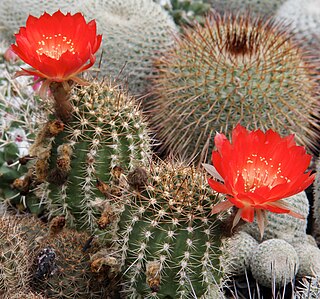
Lobivia hertrichiana, is a species of Lobivia found in Bolivia and Peru.

Mirabella estevesii, synonym Cereus estevesii, is a species of columnar cactus found in Minas Gerais, Brazil. The first description was published in 2004 by Pierre Josef Braun as Cereus estevesii.

Matucana intertexta is a species of cactus in the genus Matucana, native to Peru. It has gained the Royal Horticultural Society's Award of Garden Merit.
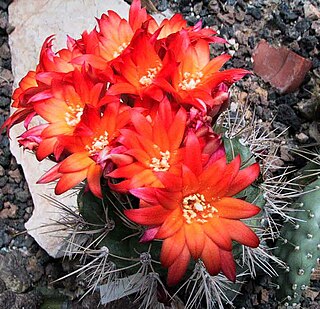
Matucana oreodoxa is a species of Matucana found in Peru.

Weberbauerocereus winterianus is a species of Weberbauerocereus from Peru.

Haageocereus versicolor is a species of Haageocereus found in Peru.
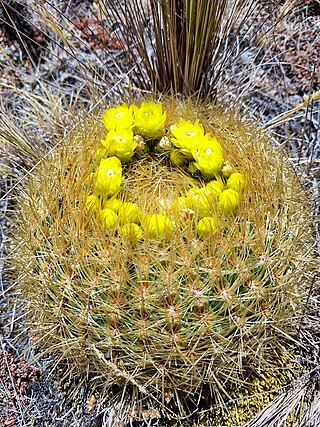
Oroya borchersii is a species of cacti, originating from Peru

Loxanthocereus xylorhizus is a species of Loxanthocereus found in Peru.

Cipocereus crassisepalus is a species of cactus endemic to the state of Minas Gerais in Brazil.
